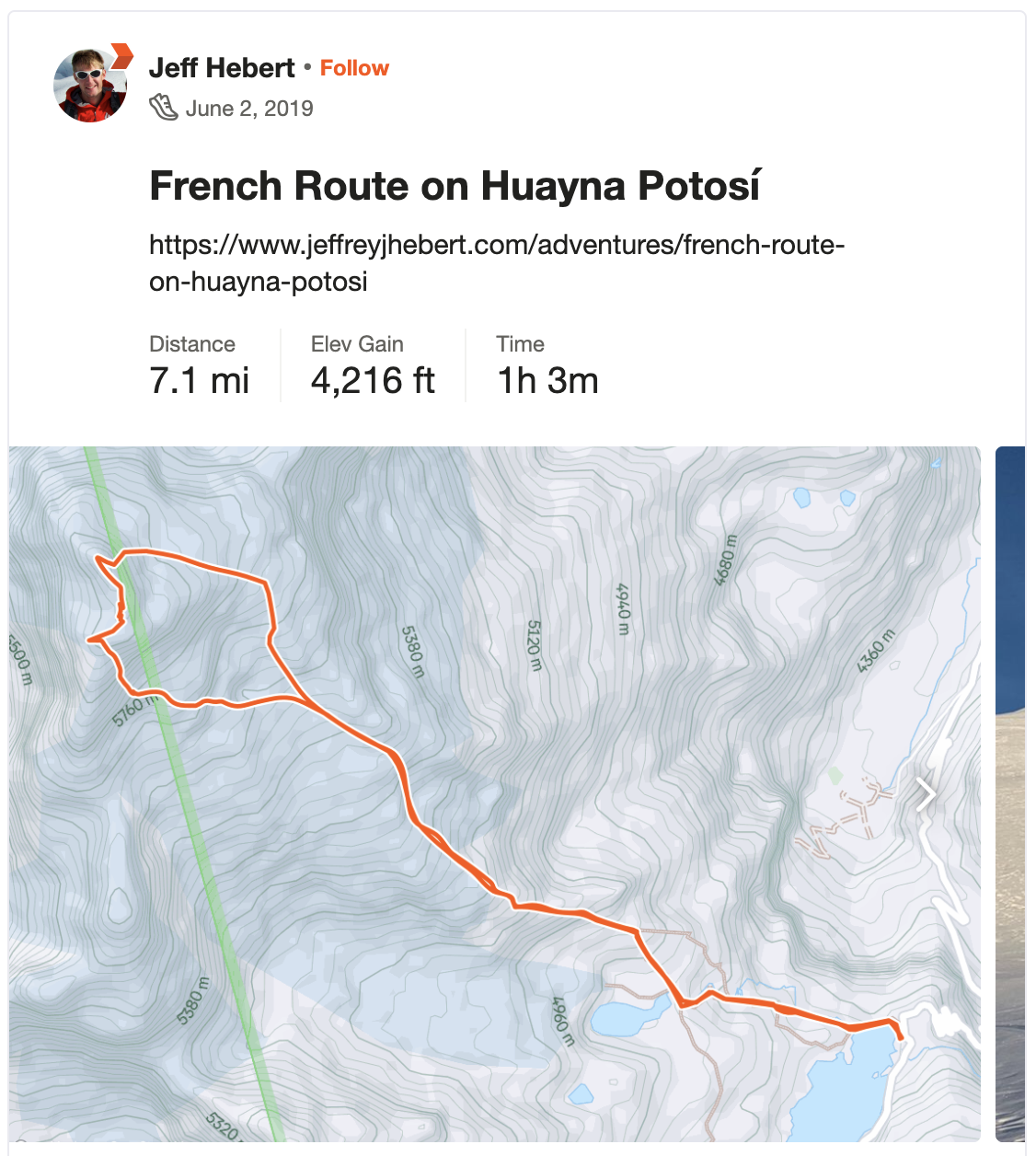Dale and I decided it would be wise to climb Huana Potosí at 19,974 feet before attempting one of the even higher peaks in Bolivia during our trip. We’d worked up to it with about a week in the country and climbs of Pequeno Alpamayo and Cabeza de Condor, so we felt pretty good at elevation. We decided to go car-to-car rather than hiking overnight gear up to one of the high camps.
We weren’t sure how to find a taxi to head out there, so we tried Uber. Ha! A driver immediately accepted our ride for 100 Bolivianos and then looked very confused when we said where we were headed. We agreed to cancel the Uber ride and pay him cash for the much longer drive. He was a teacher, driving on the weekends as a side hustle, and a cool guy. His car was ill-equipped for the rocky road, but we made it and paid him 300 Bolivianos when we made it to the dam at Zongo Pass.
We set up our tent on the concrete platform next to the refugio at 15,500 feet and spent the evening watching the mist push up the valley from the Amazon in waves and staring longingly at the mountain. We woke up at 3am and were moving after a half hour of breaking down camp and putting down some calories. We walked across the dam, balanced our way across the narrow wall of a concrete sluice, and then headed up a rough path to meet the main trail.
We made it to the rock camp at 17,000 feet in a little over an hour, passing the time on the trail with some idle banter and a couple of choice songs from our phones. At one section between the two refugios, we weren’t sure where the trail went and we ended up going straight up a steep rock face—whoops! It was very cold and still dark at the toe of the glacier where we dropped our trail runners and put on our big boots. A party of three were descending under headlamp—a client and two guides, apparently unsuccessful on the main route. We started huffing up the glacier and made it to the flatter area where Campamiento Argentino supposedly is located at about 6:30am. There were no signs of a camp, but there was a huge ice fall coming down the glacier right next to the normal route.
Photo by Dale Apgar.
We departed the normal route at 7am and did a rising traverse for the next hour and a quarter to make it to the base of the route. We took a moment here to put down some water and calories, which made both of us feel quite a bit better. What had been a cold morning had turned into a solar cooker on the East Face. The snow had softened nicely and there was a boot pack up the face, so it went quickly. We high-daggered our faces off for about 1,000 feet, simul-soloing the slope that slowly increased in angle up to 55 degrees or so and reaching the top in an hour.
Taking a break in the saddle before the summit ridge. Photo by Dale Apgar.
From there, the ridge to the summit looked like a lot of fun and more enjoyable than dropping down through the saddle to meet the normal route, so we headed up the steep snow for some bonus climbing. Some of the ridge was a bit rotten and corniced, but not too bad. We made it through this section in 30 minutes and then scampered over to the true summit, minding the huge cornice, making it there just shy of 11am. Views were pretty spectacular up there and it was relatively warm and calm. We enjoyed the moment for a bit before starting down the highway that is the normal route.
The descent was straightforward and quick. We were back down at the base by 2:30pm, including a break for Dale to take some time lapse videos of the clouds. We unfortunately had to wait quite a while for a taxi at the refugio, which was pretty cold, but it was a good chance to nap and catch up on calories before scooting back to La Paz with a gregarious fellow of a taxi driver and a local guide who needed a ride as well.
Great day with constant movement and enough technical climbing to keep it interesting!
